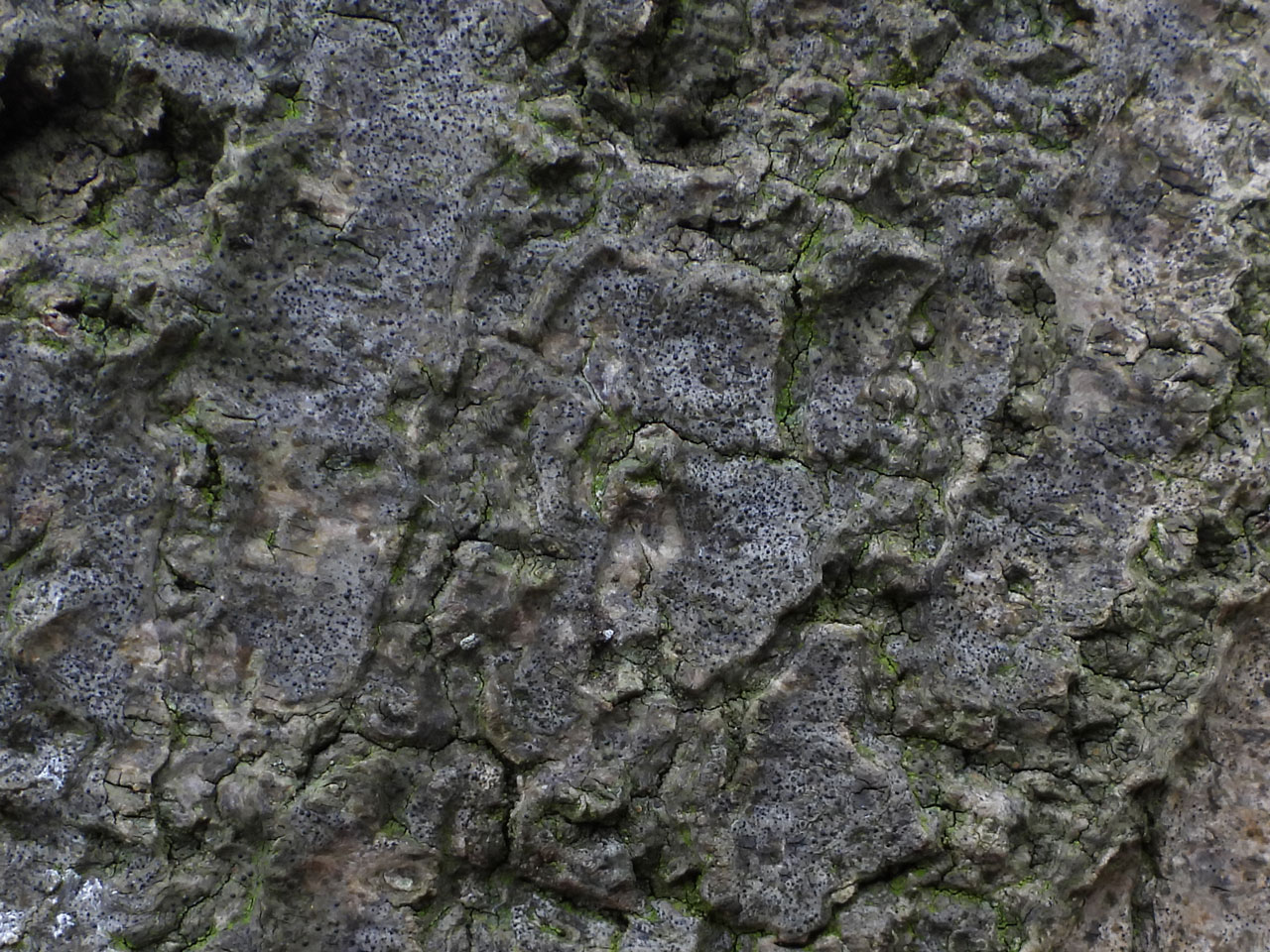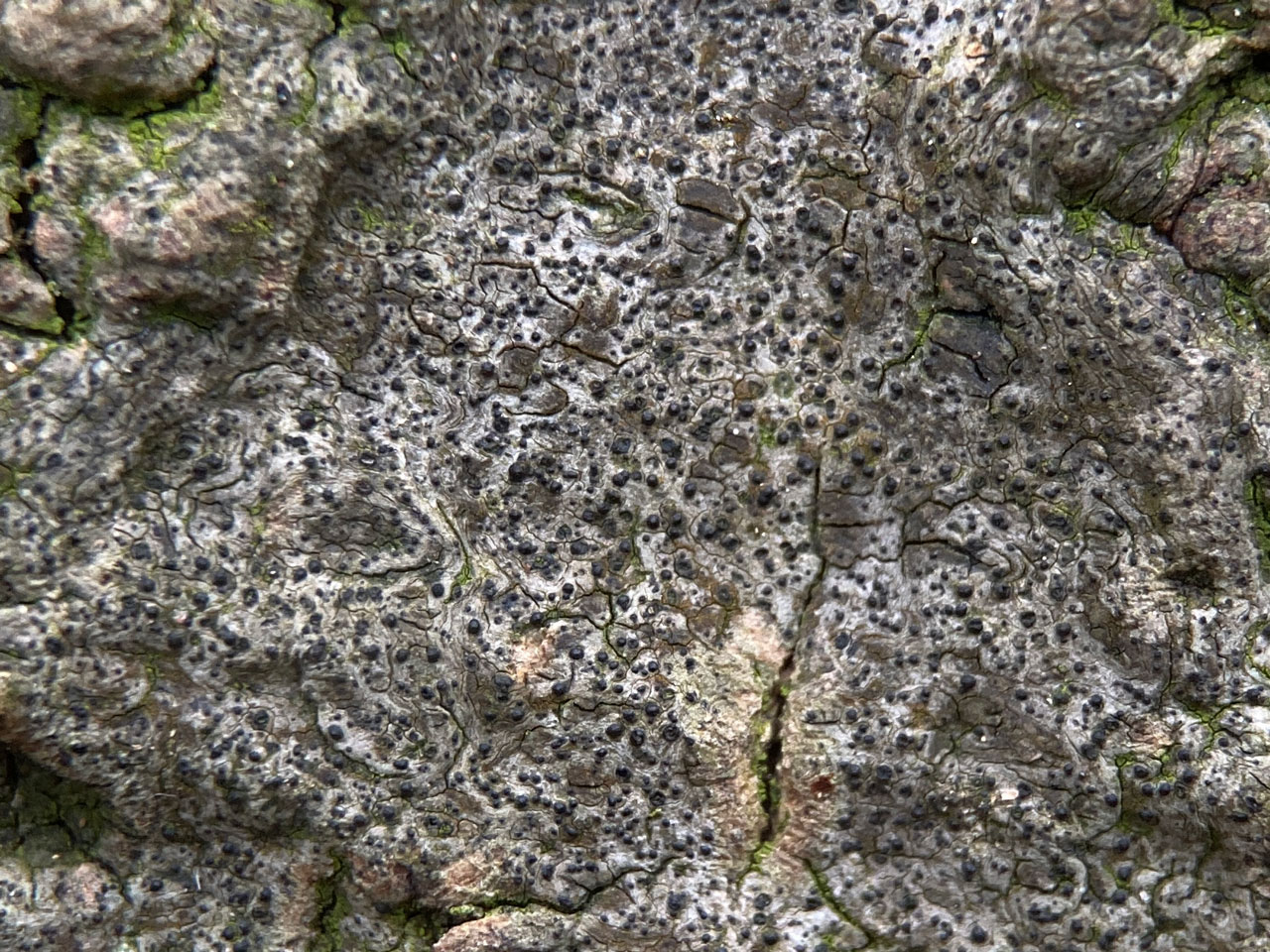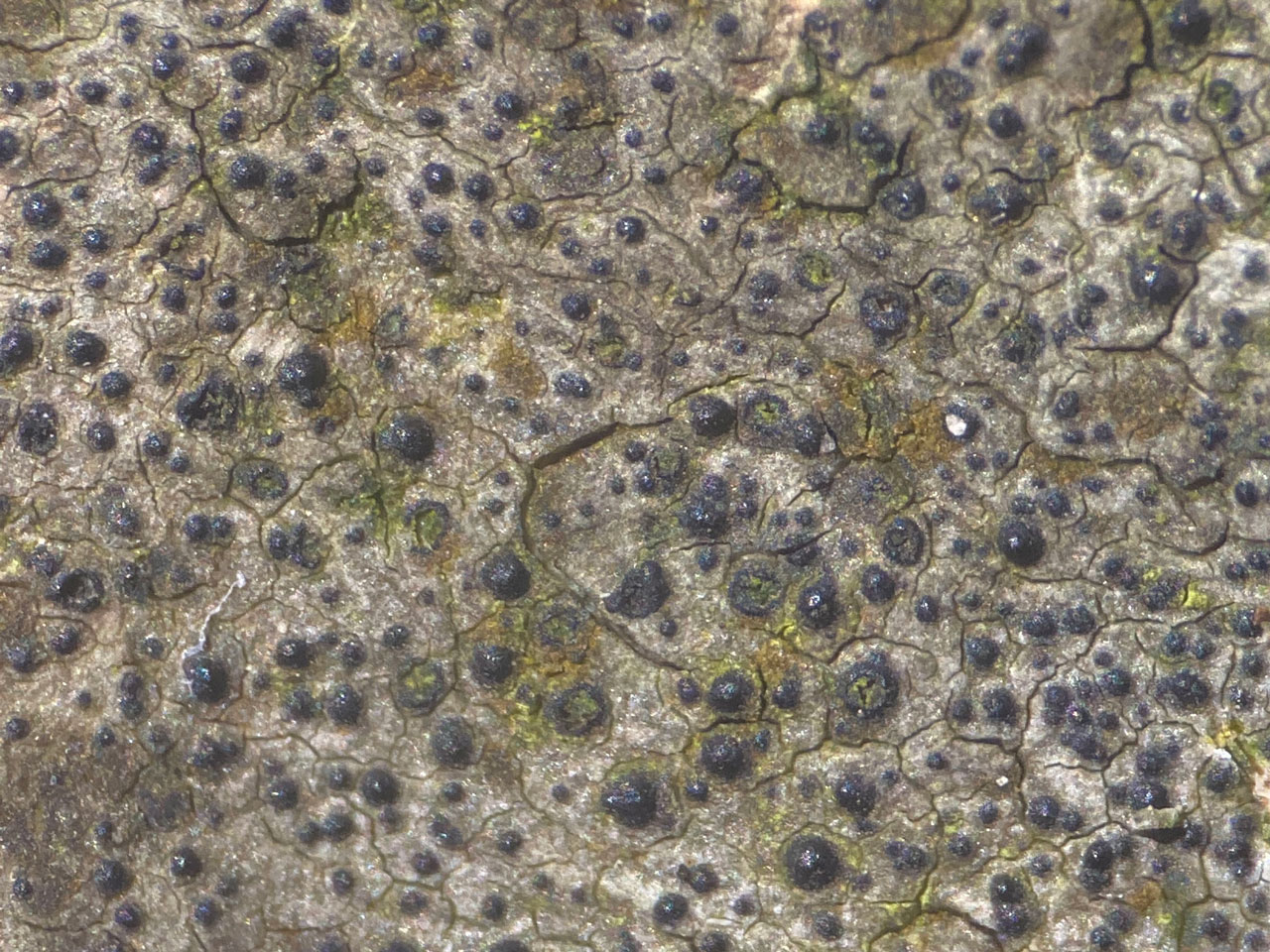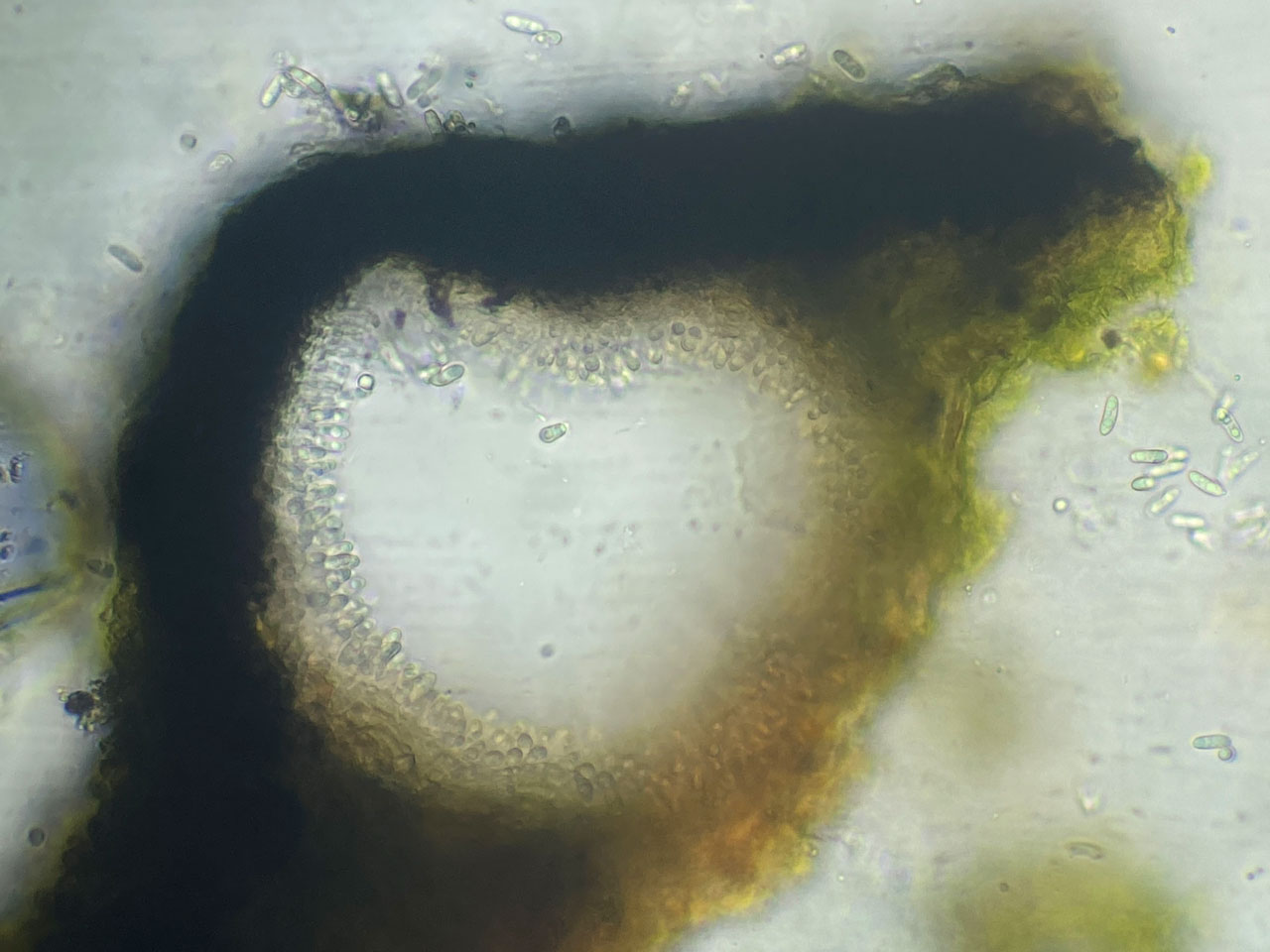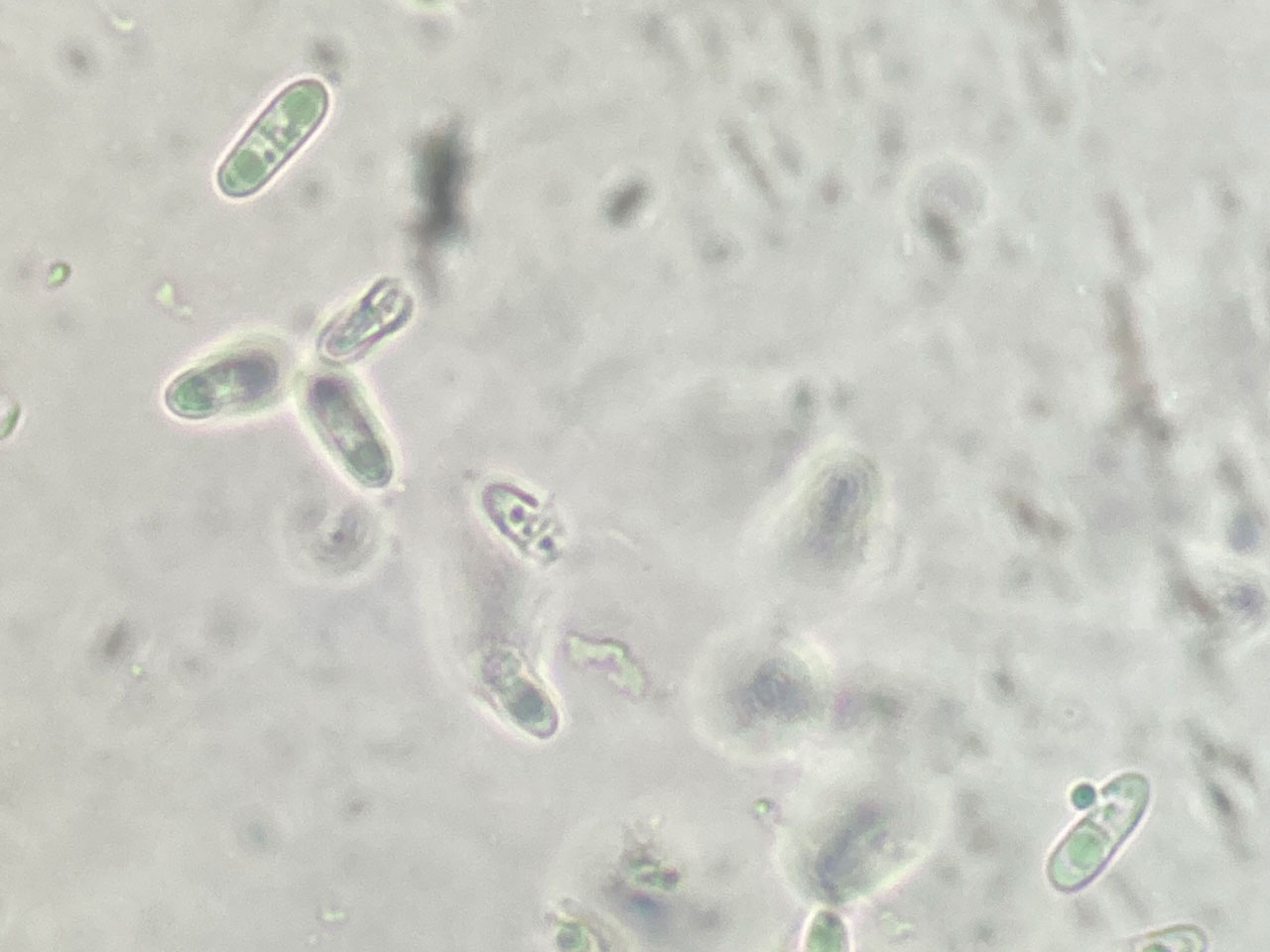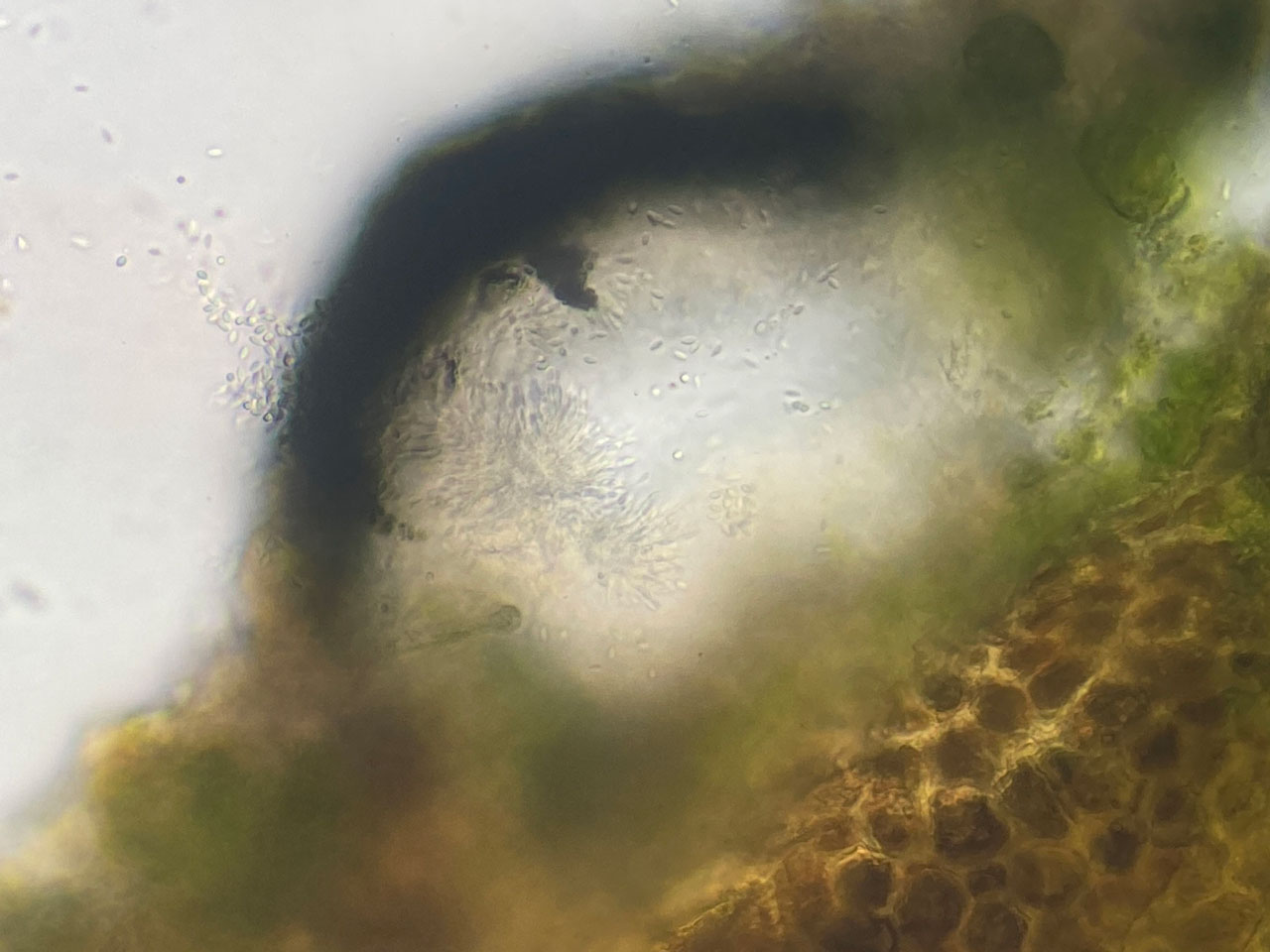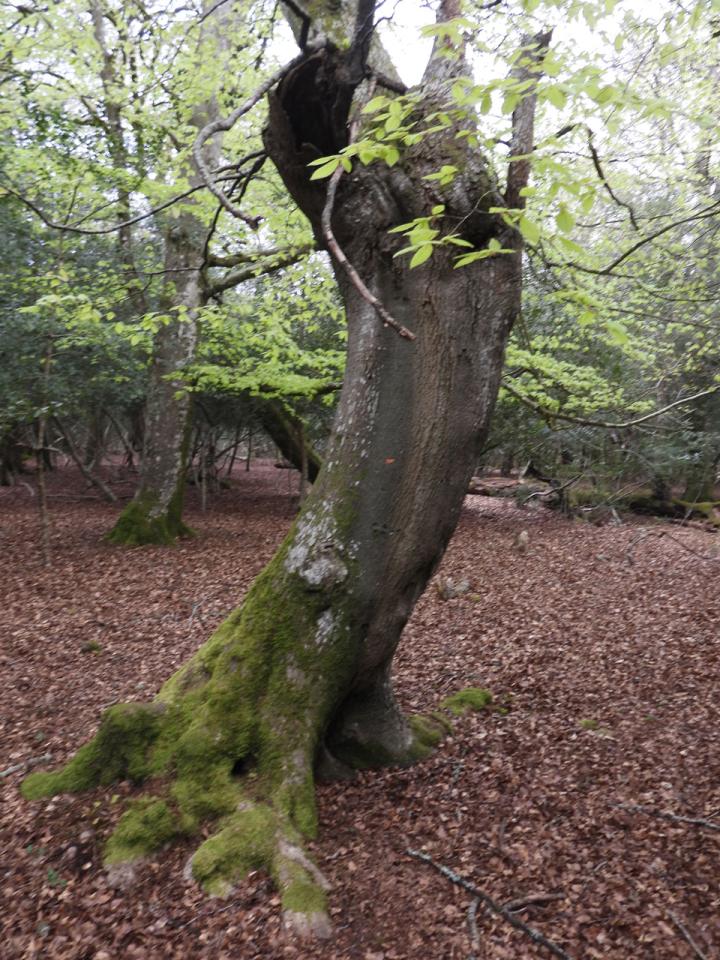Dichoporis ziziphi
A mainly Mediterranean species of subhumid to humid situations, but which has scattered isolated occurrences in temperate Europe, including in southern England. This lichen has a pale brown thallus, with both macropycnidia and microconidia intermingled but, as yet, without perithecia in English material. The macroconidia are 1 septate, (8) 9 – 10 (11) x 3–3.5µm, with a single oil body in each cell, and are borne on short conidiogeneous cells <8µm long. So far found on wound tracks on veteran Beech trees in south Hampshire.
Thallus pale brown, continuous or slightly cracked, thin, mostly immersed in bark. Ascomata, not seen in British material, black, (0.2-)0.3-0.4(-0.5) mm diam.. Ascospores 1-septate, separating into part-spores at ascus dehiscence or before, part-spores 18-28 x 3.5-5.5 μm. Macropycnidia semiglobose, 0.15 – 0.2 mm diam., macroconidia, 1-septate, (8–) 9 – 10 x 3 – 3.5µm μm, each cell with a large, persistent oil droplet, at each end with a poorly visible gelatinous appendage 2.8-3.3 x 3-4 μm; conidiogenous cells short > 8 μm long; micropycnidia like the macropycnidia but 0.1 – 1.5mm diam.; microconidia fusiform to subfusiform, 2.5-5 x 1-2 μm.
At first sight in the field, this lichen resembles Dichoporis taylorii, but that has a dark brown thallus with the macropycnidia smaller and frequently with perithecia, which are the same size as the macropycnidia of D. ziziphi. The macroconidia of D. taylorii are also longer, typically 13.5–17 x 2.5–3µm. D. phaea has a greenish thallus and shorter macropycnidia (7–8.5 × 2–2.2 µm) on long conidiogeneous cells (10–20 µm long). In addition, there is an undescribed Dichoporis species, which is also known from the New Forest, but is more frequent. This has a paler thallus, more irregular, often conjoined, macropycnidia, with conidia on long conidiogeneous cells (10–20 µm) and the conidia similar in size but a bit longer and less wide (10–12.5 (–14) x 2.5–3µm).
Found on wound tracks on veteran Beech trees in pasture woodland in The New Forest. May be overlooked in similar habitats elsewhere.

In 2024, so far only known from a few veteran Beech trees in the New Forest, South Hampshire, but potentially overlooked elsewhere. A mainly Mediterranean species of subhumid to humid situations, but it also has scattered isolated occurrences recorded to the north in Manche, France (Coste & Dufrêne, 2009), in The Netherlands and as far east as Poland (Flakus & Kukwa, 2009); the New Forest records fit well with this pattern.
Not assessed, Data Deficient on current evidence.
Coste, C. & Dufrêne, C. (2009) Reasoned Inventory of the Lichens and Lichenicolous Fungi of the Cascades of Mortain (department of Manche, 50). Société Tarnaise de Sciences Naturelles 57-80: 57-80
Flakus A. & Kukwa, M. (2009) Additions to the biota of lichenized fungi of Poland. Acta Mycologica 44: 249–257
Nimis P.L., (2024) ITALIC - The Information System on Italian Lichens. Version 7.0. University of Trieste, Dept. of Biology, (https://dryades.units.it/italic), accessed on 2024-05-10.
Roux, C. & Sérusiaux, E. (2004). Le genre Strigula (Lichens) en Europe et en Macaronésie. Bibliotheca Lichenologica 90: 1–96.
Text by Neil A Sanderson species description based on Nimis (2024), Roux & Sérusiaux (2004) & New Forest specimen
